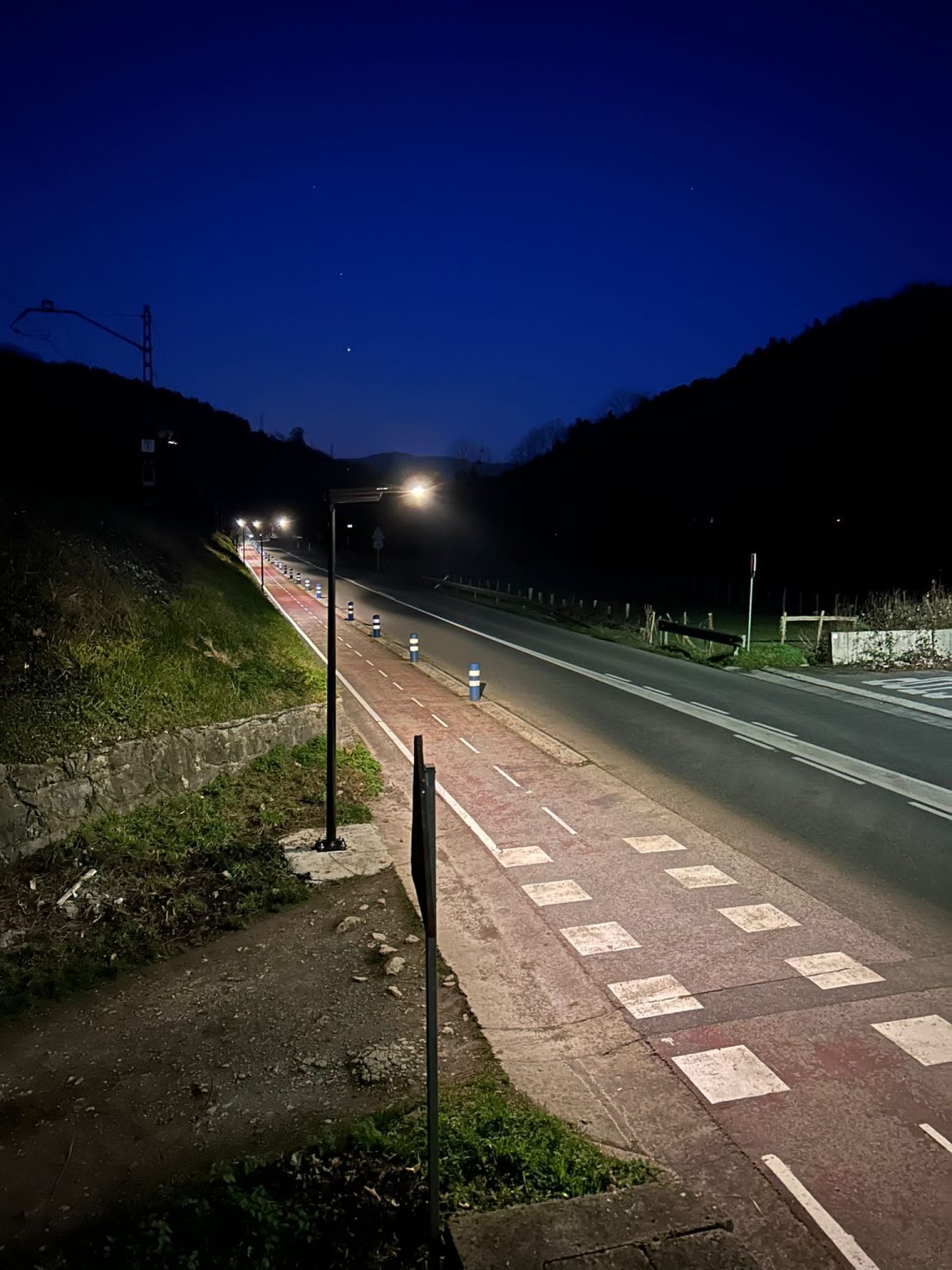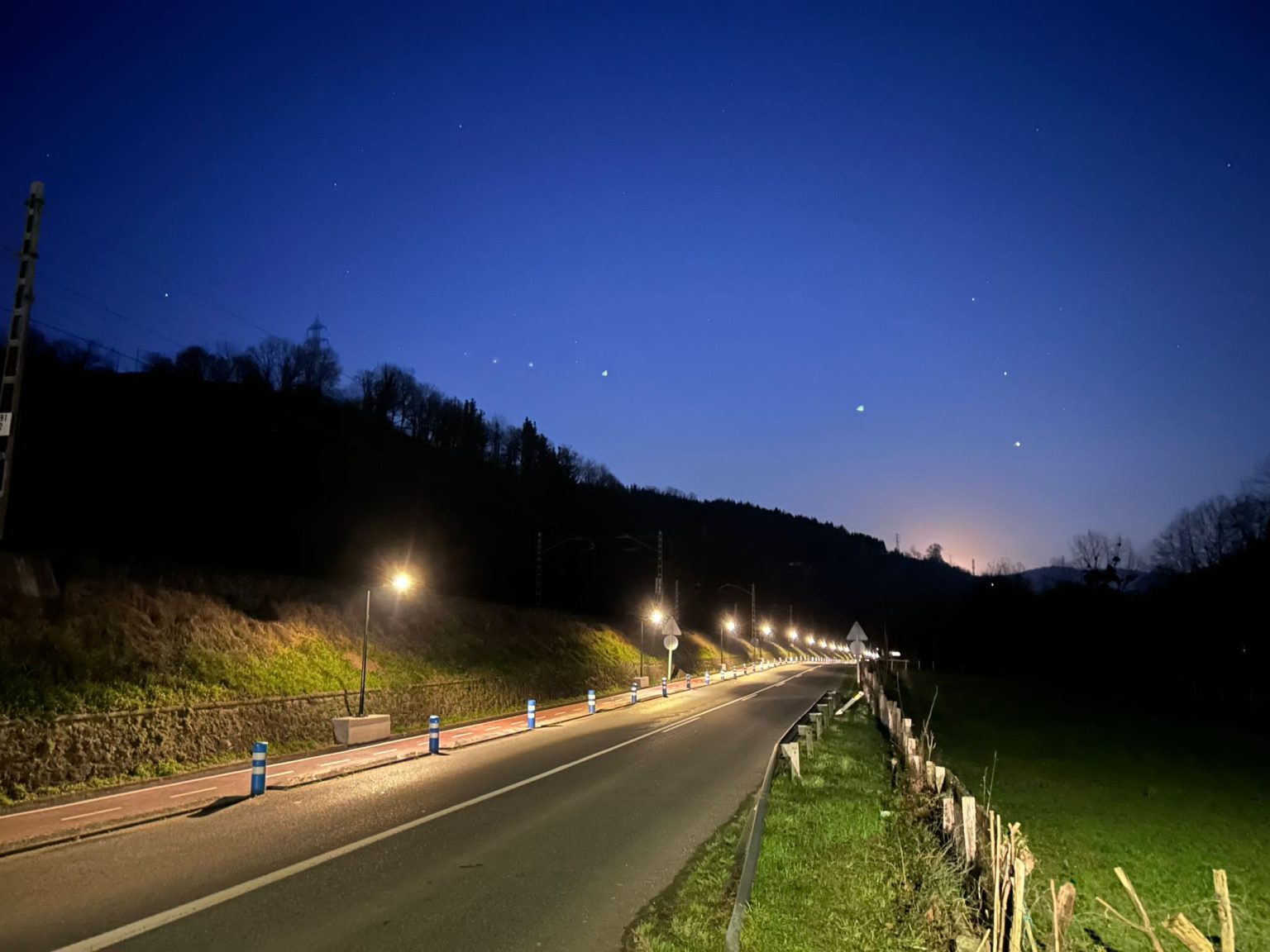In Spain’s Basque Country, a new bike path now connects several towns, making eco-friendly transportation easier and more accessible. However, once night falls, the lack of lighting limits its use and increases the risk for cyclists. Installing a wired lighting network would have required major construction work on an already paved surface—leading to high costs and severe disruptions. A faster, more efficient, and sustainable solution was needed.
Mérignac – FRANCE

Installing a traditional wired lighting system would have meant digging trenches to lay cables and connect them to the grid—a time-consuming and costly project. It is even more problematic on a two-lane road with heavy traffic.
This type of work would have caused major inconvenience for local users, not to mention the waste of materials to repave the road afterward. Given the alternatives, it’s a hard choice to justify.
Solar lighting eliminated all these issues—no connection to the power grid, no trenches, and zero impact on traffic. Because each light operates independently, the entire installation was completed in record time, without disturbing residents or road users.

An autonomous solution that’s quick to deploy and perfectly suited to the site was selected to avoid heavy, expensive construction. Sixty iSSL+ solar streetlights from Sunna Design were installed—proven technology designed for safe and reliable lighting on pedestrian and bike infrastructures. They offer durability, consistent performance, and zero impact on the electrical grid.
Each iSSL+ unit is a fully integrated solar streetlight, combining a photovoltaic panel, a high-performance battery, and an efficient LED system. Its major advantage? A compact design that weighs less than 13 kg (excluding the pole), making installation fast and simple. In less than 10 minutes, each unit can be mounted and activated—no wiring required.
Beyond its energy autonomy, the iSSL+ features smart connectivity. With SunnAPP, Sunna Design’s Bluetooth app, lighting control happens right at the base of the pole. Adjust brightness, program lighting schedules, and monitor performance data with ease. The app provides a performance history to simplify maintenance if any issue arises.

Thanks to this solution, the bike path is now safely lit after dark, offering cyclists and pedestrians a better experience. The lighting is uniform and reliable, ensuring clear visibility—even in areas surrounded by vegetation.
Beyond safety, this project highlights the efficiency of solar solutions for sustainable mobility infrastructures. It proves that key routes can be illuminated without major construction work, excessive costs, or environmental impact. A safer bike path, an intact road, and a fast installation are the winning combination for municipalities seeking durable, high-performance alternatives.
